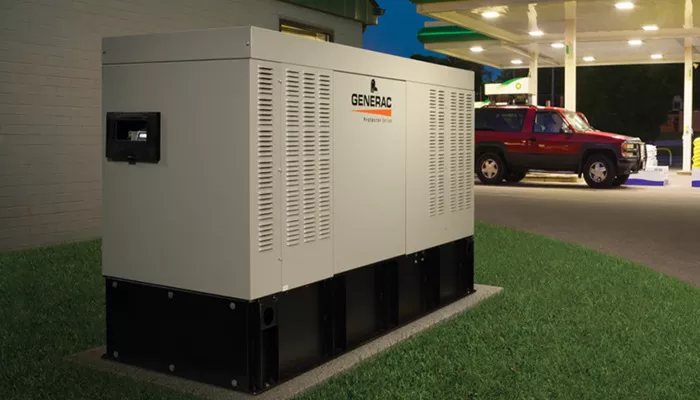Power outages can disrupt daily life, leaving you without essential appliances and systems. A backup generator is a reliable solution to keep your home running during emergencies. However, choosing the right generator size is crucial to ensure it meets your power needs without overspending. This guide will walk you through the steps to size a backup generator for your home.
Why Sizing a Generator Correctly Matters
Sizing a generator correctly is essential for two main reasons:
Efficiency: An undersized generator won’t power all your appliances, while an oversized one wastes fuel and money.
Safety: Overloading a generator can damage both the generator and your appliances.
Step 1: Determine Your Power Needs
The first step in sizing a generator is calculating your home’s power requirements.
List Essential Appliances and Systems
Make a list of the appliances and systems you want to power during an outage.
Common items include:
- Refrigerator
- Heating or cooling systems
- Lights
- Sump pump
- Microwave
- Television
- Internet router
Check the Wattage of Each Appliance
Every appliance has a wattage rating, usually found on its label or in the user manual. Note both the running wattage (power needed to operate) and the starting wattage (extra power needed to start motors).
Calculate Total Wattage
Add up the running wattage of all essential appliances. Then, add the highest starting wattage to this total. This sum represents your home’s peak power demand.
Step 2: Choose the Right Generator Type
Generators come in two main types: portable and standby.
Portable Generators
Pros: Affordable, easy to move, and suitable for powering a few appliances.
Cons: Require manual setup, limited power output, and must be used outdoors to prevent carbon monoxide poisoning.
Standby Generators
Pros: Automatically kick in during outages, can power an entire home, and are permanently installed.
Cons: Expensive, require professional installation, and take up more space.
Step 3: Consider Fuel Options
Generators run on different fuels, each with its pros and cons.
Gasoline
Pros: Readily available and affordable.
Cons: Short shelf life, less efficient, and requires frequent refueling.
Propane
Pros: Longer shelf life, burns cleaner, and is safer to store.
Cons: Requires a large storage tank and may be less efficient in cold weather.
Diesel
Pros: Highly efficient, durable, and ideal for heavy-duty use.
Cons: Noisy, expensive, and emits more pollutants.
Natural Gas
Pros: Continuous supply if connected to a gas line, clean-burning, and cost-effective.
Cons: Requires a gas line connection and may not be available in rural areas.
Step 4: Calculate the Generator Size
Once you know your power needs and preferred fuel type, it’s time to determine the generator size.
Small Generators (3,000–5,000 Watts)
Ideal for powering a few essential appliances, such as a refrigerator, lights, and a microwave.
Medium Generators (7,000–10,000 Watts)
Suitable for larger homes, capable of running multiple appliances, including a heating or cooling system.
Large Generators (12,000+ Watts)
Designed for whole-house power, including high-demand systems like central air conditioning and electric water heaters.
Step 5: Factor in Runtime and Load Management
A generator’s runtime depends on its fuel capacity and load.
Runtime
Check the manufacturer’s specifications for runtime at different load levels. For example, a generator may run for 8 hours at 50% load but only 4 hours at full load.
Load Management
To extend runtime, prioritize essential appliances and avoid running high-wattage devices simultaneously.
Step 6: Account for Installation and Maintenance
Proper installation and maintenance are critical for generator performance and safety.
Installation
Portable Generators: Place outdoors in a well-ventilated area, away from windows and doors.
Standby Generators: Hire a licensed electrician for installation, including a transfer switch to prevent backfeeding.
Maintenance
- Regularly check oil levels, air filters, and fuel systems.
- Test the generator monthly to ensure it’s in working condition.
Step 7: Budget for Your Backup Generator
Generators vary widely in price, so it’s important to set a budget.
Initial Costs
- Portable generators typically cost between 2,000.
- Standby generators range from 10,000 or more, depending on size and features.
Ongoing Costs
- Fuel expenses
- Maintenance and repair costs
Step 8: Consult a Professional
If you’re unsure about sizing or installation, consult a licensed electrician or generator dealer. They can assess your home’s power needs and recommend the best generator for your situation.
Conclusion
Sizing a backup generator for your home doesn’t have to be overwhelming. By determining your power needs, choosing the right type and fuel, and factoring in installation and maintenance, you can ensure your home stays powered during outages. Take the time to research and consult professionals to make the best decision for your household.
With this guide, you’re now equipped to confidently size a backup generator for your home. Stay prepared and keep your family safe and comfortable, no matter what the weather brings!

